Victorian mourning clothes may have been hanging in your ancestor’s closet during the 1800s – a black dress with a high neck, black leather button-up shoes, a black top hat, and more. And when death brought those black clothes out of storage, your ancestors may have worn them for years at a time.
England’s Queen Victoria, who was crowned June 20, 1837, set the standard for Victorian mourning clothes. She was the second-longest reigning monarch in British history and she is also known for deep grief at the passing of her husband, Prince Albert.

The couple had been married for 21 years and had 9 children together when Albert suddenly passed away. He died of typhoid fever in 1861 at the age of 42. Victoria was so devastated that she entered into a deep state of mourning and wore black for the rest of her life.
Victoria’s behavior was so influential that it impacted entire nations, causing a shift in funeral customs and mourning clothes.

Mourning dress consisted of entire outfits intended to inform onlookers of the person’s state of grief. The fabrics and colors changed over time to mark how long it had been since the death of the loved one.
Since mortality rates were high during the Victorian era, mourning dress was often be worn for most of their lives.
Victorian Mourning Clothes Were a Must
Following Albert’s death, Queen Victoria dressed in full mourning clothes for three years. And she continued to wear black in some form until the day she died – a full forty years!
Mourning clothes were considered an outward expression of one’s inner grief. It was considered disrespectful to break with traditional standards. Going out without your black silk weeping veil or carrying a handkerchief with too narrow of a black border could signify that you did not love your departed family member deeply enough.
Earlier societal groups used clothing as a symbol of mourning, but Victorian mourning clothes rituals were especially strict. If someone was in doubt as to what was appropriate, they could consult the Cassell’s Household Guide.
Prior to the Victorian era, mourning clothes were not put on until the day of the funeral. But during the Victorian era, it was customary to put on mourning clothes as soon as possible after someone died.

When family members died there wasn’t time to go shopping for mourning clothes. They had to put on right away! So mourning clothes were purchased in advance in case death came to their household.
Who Wore Mourning Clothes?
In our day, it is still fairly common to see nearly everyone at a funeral wearing black or dark colors. But in the Victorian era, mourning clothes were reserved for close family members of the deceased.
In fact, it was considered rude for anyone outside of the family to wear mourning clothes to a funeral.
There was a purpose to this social norm. An entire community would know to rally around a grieving family when they saw them wearing mourning garb.
Victorian Mourning Clothes for the Ladies
A Victorian woman was expected to remain in deep mourning for a year and a day during which she wore only simple black clothing.
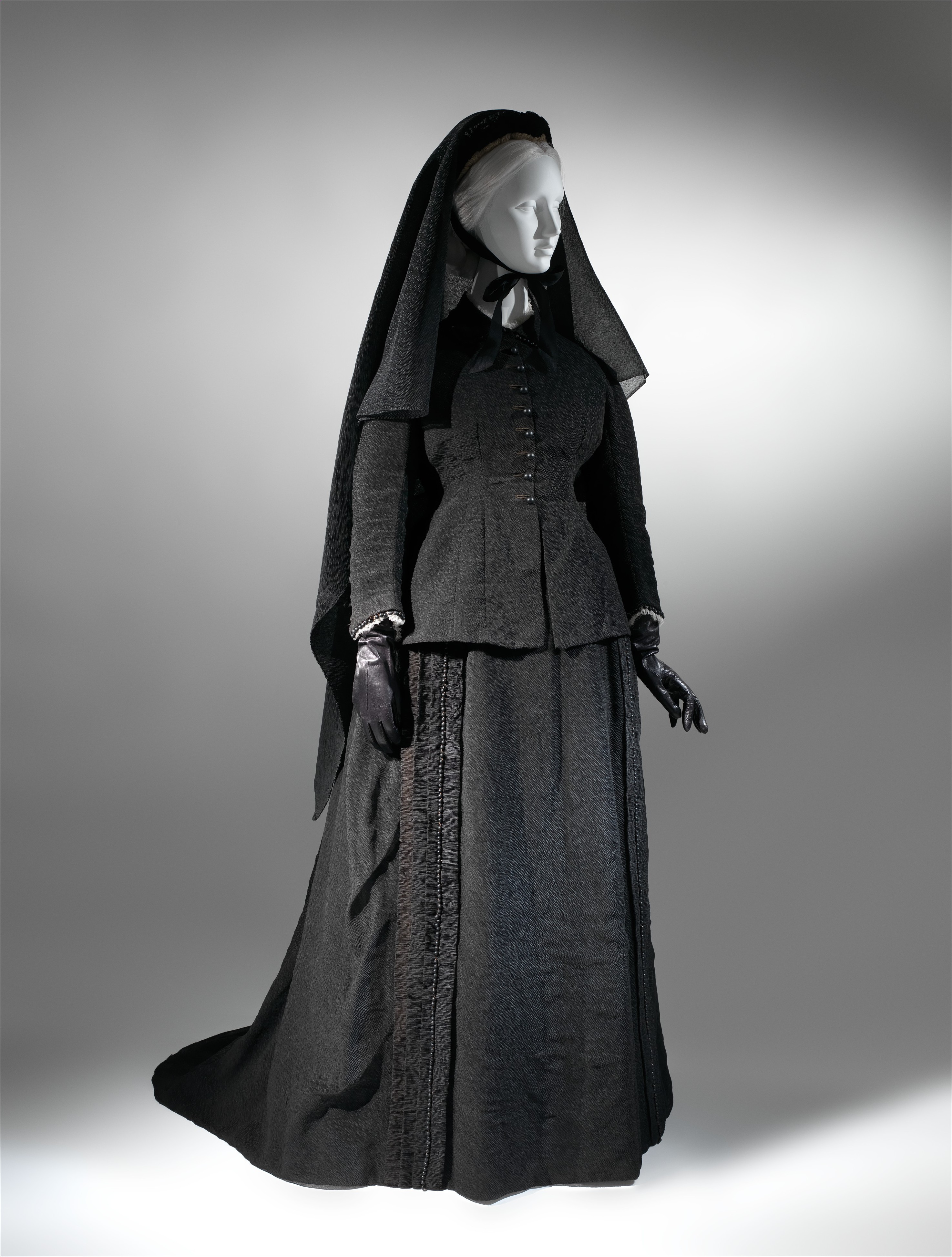
This was followed a period of “second mourning” which lasted six to nine months and allowed for some use of trim and small jewelry.
Next came three to six months of “half-mourning” which allowed for more elaborate fabrics and jewelry. Colors like gray and lavender were permitted as long as there was minimal ornamentation.
During the entire mourning time, a woman was expected to refrain from attending any social events, especially weddings.
The Victorian Lady’s Mourning Dress
Deep mourning required dressing entirely in black. A woman’s ensemble was called “widow’s weeds”.
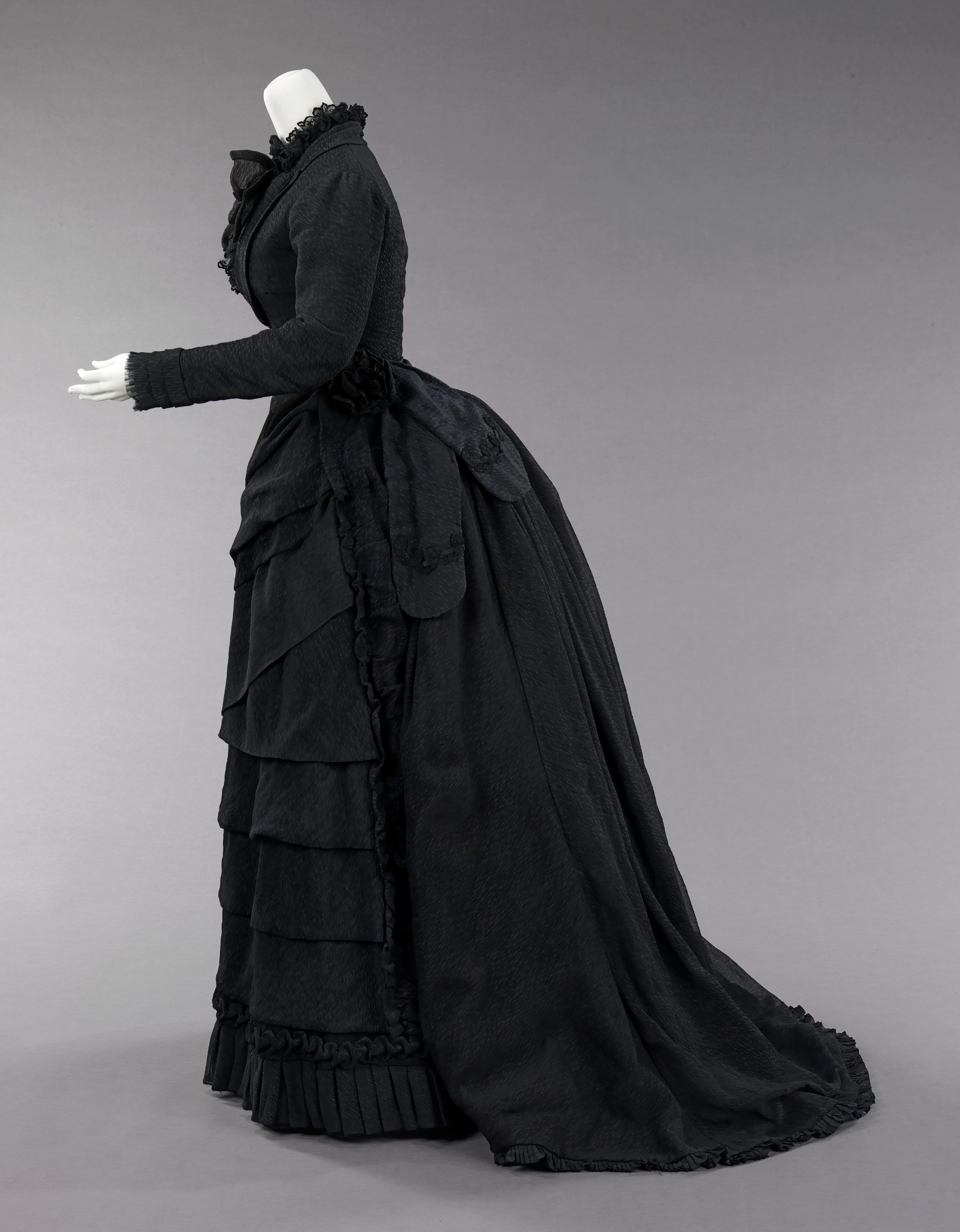
The body was to be completely covered with a lusterless fabric that would not reflect light, such as crepe. The process used to remove the sheen from crepe fabric caused it to have a strange odor which some found offensive. But wear it, they must!
Women who couldn’t afford special black mourning clothes dyed their everyday clothing black.
During the later stages of mourning, dresses could be grey or shades of violet with black decorative designs and trim.
The Victorian Lady’s Mourning Veil
It was considered inappropriate to show emotion in public so veils were a way to allow a grieving family member to keep their tears to themselves.
Widows in deep mourning wore a black silk weeping veil or “widow’s cap” covering their faces for 3 months after their husband’s death.

Veils were sometimes a woman’s full height and were secured in place with a hat. Crepe veils were incredibly heavy. They were difficult to breathe through and difficult to see through.
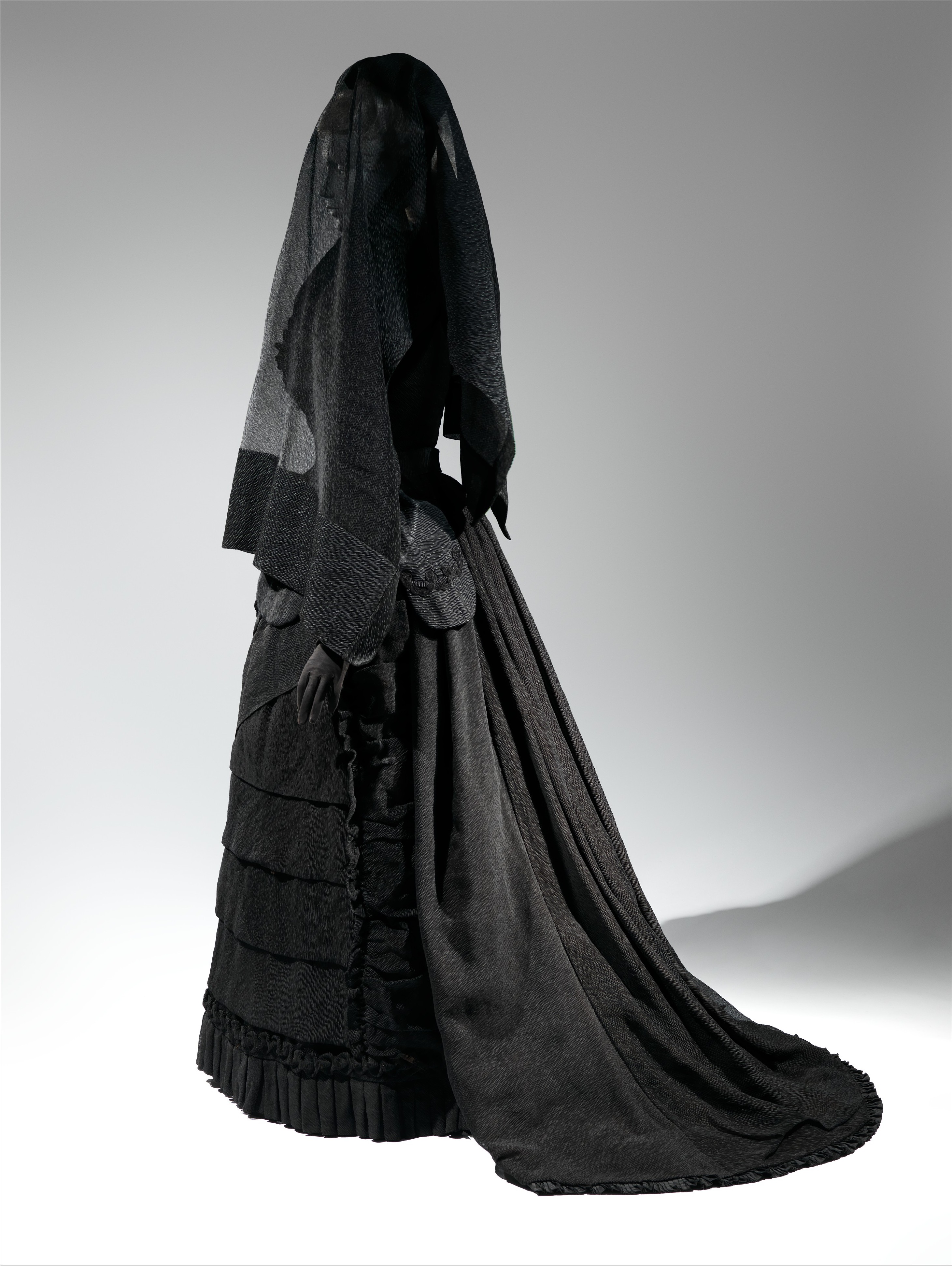
It was considered vain to wear dresses that were smooth or shiny during the mourning period so the fabric was treated with chemicals to make it matte and crinkly. Many of the substances used were toxic. One of the most common was arsenic. (Yes, deadly arsenic!!)
By the 1880s, medical journals were reporting on the ill health effects of heavy crepe veils.
The New York Medical Journal noted “the irritation to the respiratory tract caused by minute particles of poisonous crepe”.
The North-Western Lancet called the mourning veil “a veritable instrument of torture” in hot weather. It left stains on women’s faces, caused acne, headaches, and filled their lungs with toxic particles.

Fashion magazines published advice like this for women who were doomed to wear the black veil:
“It is a thousand pities that fashion dictates the crepe veil, but so it is. It is the very banner of woe, and no one has the courage to go without it. We can only suggest to mourners wearing it that they should pin a small veil of black tulle over the eyes and nose, and throw back the heavy crepe as often as possible, for health’s sake.” (From Polite Life and Etiquette or What is Right and The Social Arts, written by Georgene Corry Benham, 1891)
The Victorian Lady’s Mourning Bonnet
As a woman moved into “second mourning”, black crepe bonnets replaced veils.
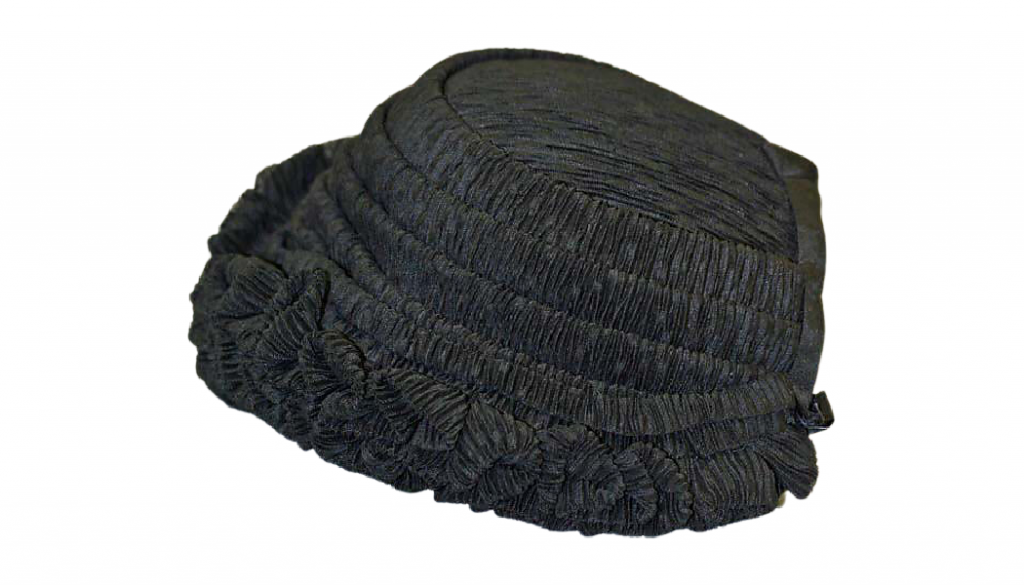
After three months, a widow’s veil was moved to the back of their bonnet.
They continued to wear the veils for approximately one year and the rest of their mourning attire for a total of two years.
The Victorian Lady’s Ostrich Feather Hat
As the “half-mourning” period was entered women could wear fancier hats.

Ostrich feathers and jewelry could be added to their black hats.
The Victorian Lady’s Mourning Parasol
Fashion accessories such as parasols were black during deep mourning. They did not have any lace or other decorations.
Parasols for later mourning periods could be gray or lavender with black trim.
The Victorian Lady’s Black Button Trim
The use of jewelry was forbidden during deep-mourning but dulled black jet buttons were fine.
So buttons gradually made their way onto collars and became a new form of trim!
The Victorian Lady’s Mourning Handkerchief
Even handkerchiefs showed the world the stage of mourning a woman was in.

Wide black borders represented the deep-mourning stage.

Later mourning stages called for narrower borders.
The Victorian Lady’s Mourning Gloves
During the Victorian era ladies were strongly encouraged to wear gloves not only outdoors, but indoors as well. Gloves were an indicator of a person’s social and economic status.

Long black kid-skin gloves were worn during the deep mourning phase.
There were no mass-produced gloves. After a measuring and fitting session, each pair was custom-made so they would fit perfectly.
It was scandalous at any time for a woman to be seen outside of her home without gloves on and this was especially true for a widow.
The Victorian Lady’s Mourning Fan

During the Victorian era, black ostrich feathers showed up on women’s fans.
The Victorian Lady’s Mourning Cape
Some capes were for warmth but many were just for added adornment as the mourning period came to a close.
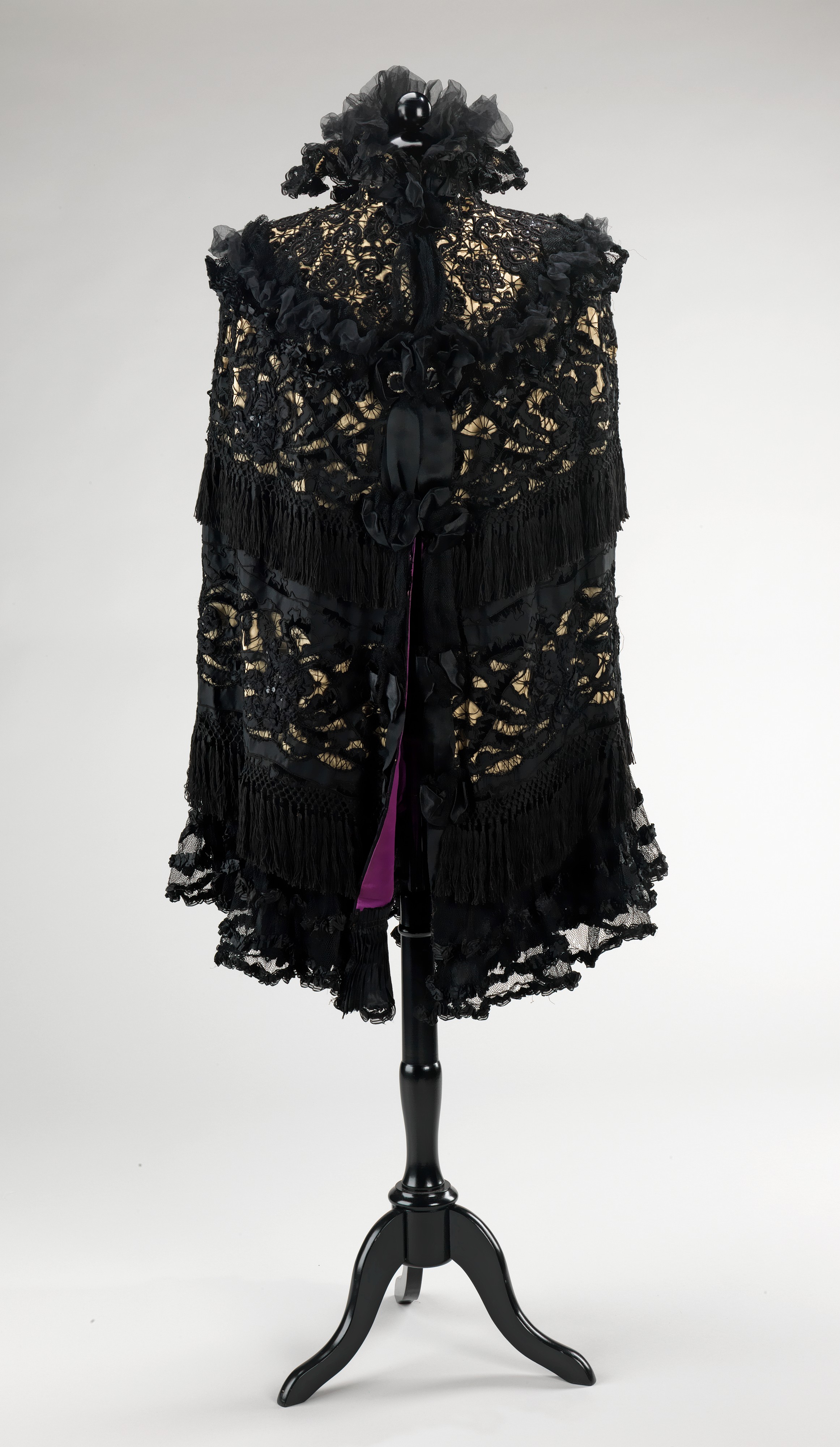
This cape, with its purple ribbon and lace, was an example of a half-mourning evening garment.

This elegant black ostrich feather cape was also a half-mourning accessory.
Victorian Lady’s Human Hair Jewelry
Keeping a lock of someone’s hair was considered a sentimental thing to do during the 1800s. It was commonly done when someone moved away or when they died.
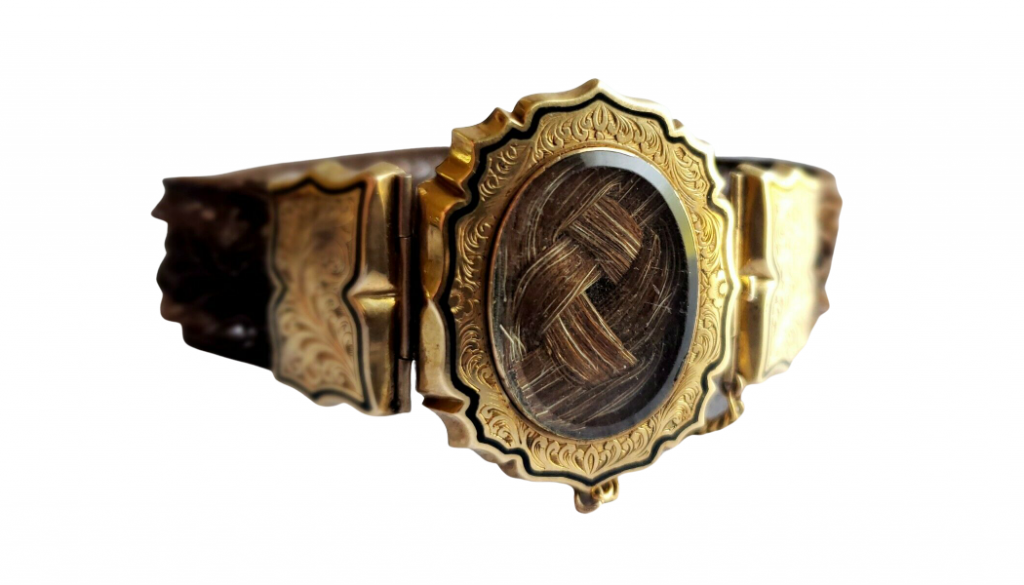
The lock of hair was often placed in a locket.
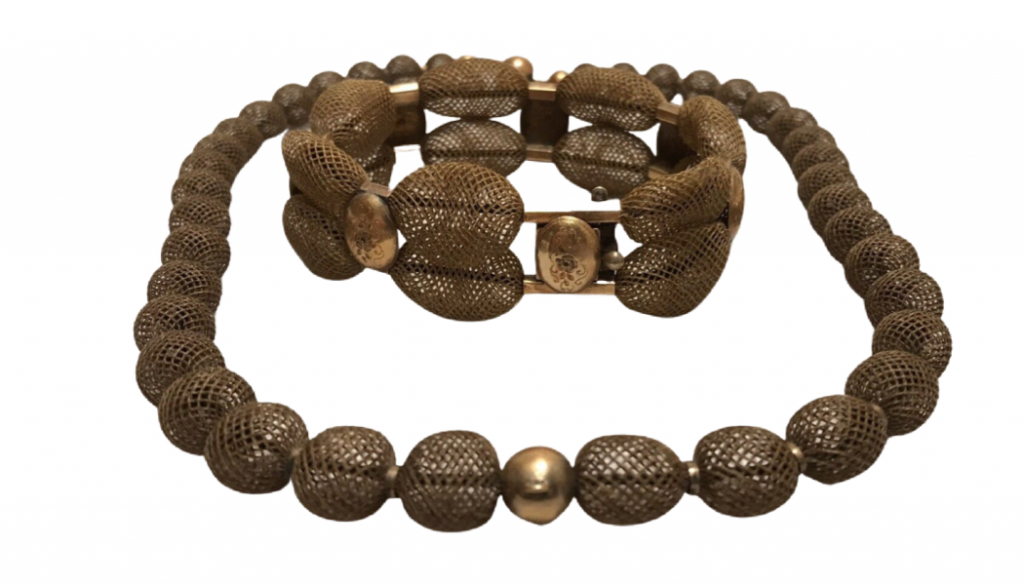
It could even be woven into a bracelet or a necklace.
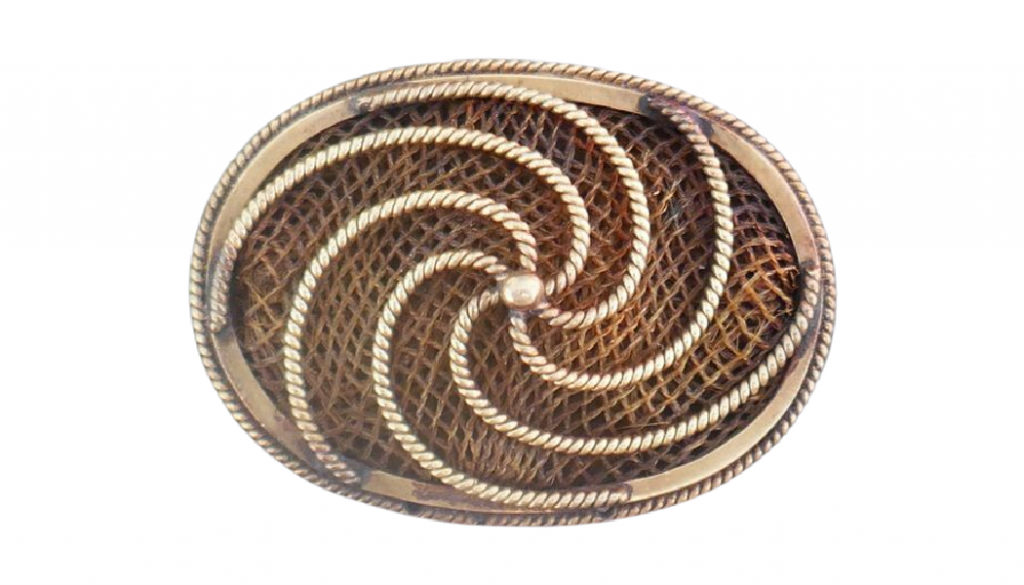
Or intricately placed in a golden brooch.
To us, human hair jewelry seems rather odd. But to our Victorian ancestors, it was a sweet, tender way to remember those they loved.
Queen Victoria’s Human Hair Headdress
This human hair thing really took off with Queen Victoria.

She carried this custom to the extreme by wearing an entire mourning headdress made of blond hair.

Just lovely, isn’t it?! Ummmm . . .
Victorian Mourning Clothes for the Gentlemen
For men, funeral fashion was much easier – they simply wore dark suits with black gloves, hatbands, and cravats.
The period of mourning for men was also different. A husband was expected to mourn a wife for just three months. During that time, they could still undertake business and attend social events.
The Victorian Gentleman’s Mourning Suit

Victorian men who were in mourning wore plain black suits.
The Victorian Gentleman’s Mourning Hat
Victorian mourning clothes for men included a silk black top hat. The width of the hat-band depended on how close the person who wore it was to the person who died.

If the top hat was worn by the husband of the deceased then the band was expected to be about seven inches wide.
Hats worn by fathers for sons, or sons for fathers, were about five inches wide.
For other degrees of relationships, the width of the hat-band varied from two and a half inches to four inches.
The Victorian Gentleman’s Mourning Cravat
The cravat was the forerunner of today’s necktie. It was a short, wide strip of fabric worn around the neck and tucked inside a shirt or overcoat.

Most of the time Victorian cravats were white but during the mourning period, they were black.

A tiny pin sometimes held the cravat in place.
The Victorian Gentleman’s Mourning Gloves
Men’s mourning gloves were black leather and had long cuffs.

It was customary to present a pair of mourning gloves as a gift to the person who officiated at the funeral whether that was the local religious leader or the undertaker.
Why did the Victorians Wear Mourning Clothes?
Mourning clothes let our Victorian ancestors tell the world that they were grieving without them having to say a word about it to anyone.
It was so unacceptable to speak of the loss of a loved one that they let their clothes do the talking.

The following sketch from a women’s magazine published in 1831 shows why Victorian mourning clothes were so important to people of that era.
“The mourning habit is a sacred shield against that intrusive curiosity . . . which would otherwise urge inquiries about why the countenance was sad . . .”
For example . . . “The brother of Miss B. had been dead only ‘three little weeks’– but there are duties which make it indispensable she should go abroad. If mourning apparel were prohibited, she may go forth in the same dress she would have worn had her dear brother been the companion of her walk.
“She meets a friend just arrived in the city, and who consequently knows not her loss. His salutation is cordial but it is repelled by a sad and chilling expression of countenance in Miss B.
“She is shocked at his levity and he is stung by her coldness or indifference. Their feelings are mutually wounded . . .
“Reverse the picture. Let the mournful apparel of Miss B. show that she has a reason for her sadness. The friends meet. The tale of sorrow is told and compassion is felt.” (from the Ladies’ Magazine and Literary Gazette, 1831, p. 115)
Will this Never End?
Some women could end up wearing mourning clothes for decades if they lost several close family members in succession. This was often the case during the American Civil War.
But ending the mourning period too soon was considered disgraceful.

In the 1939 film Gone with the Wind, widow Scarlett O’Hare drew criticism by dancing with Rhett Butler at a ball while still wearing her mourning clothes.
Packing Away the Victorian Mourning Clothes
At the end of the mourning period, deep black dresses and suits were packed away. Family members gradually transitioned from dark colors to lighter ones.
Black ostrich feathered hats and top hats went into storage trunks. Black parasols and leather gloves were laid away on closet shelves.

Social events again became a part of our ancestor’s lives. Black cravats were traded for white. Ball gowns replaced mourning dresses. Smiles swept away sadness.
Volunteering to Take Gravestone Photos
The BillionGraves app helps preserve history and family memories.
We need your help to take photos of gravestones! It easy and done completely with your smartphone! Click HERE to get started.

You are welcome to do this at your own convenience, no permission from us is needed. If you still have questions after you have clicked on the link to get started, you can email us at Volunteer@BillionGraves.com. We’ll be happy to help you!
Are you planning a group service project? Email us at Volunteer@BillionGraves.com for more resources. We will help you find a cemetery that still needs to have photos taken.
Happy Cemetery Hopping!
Cathy Wallace


